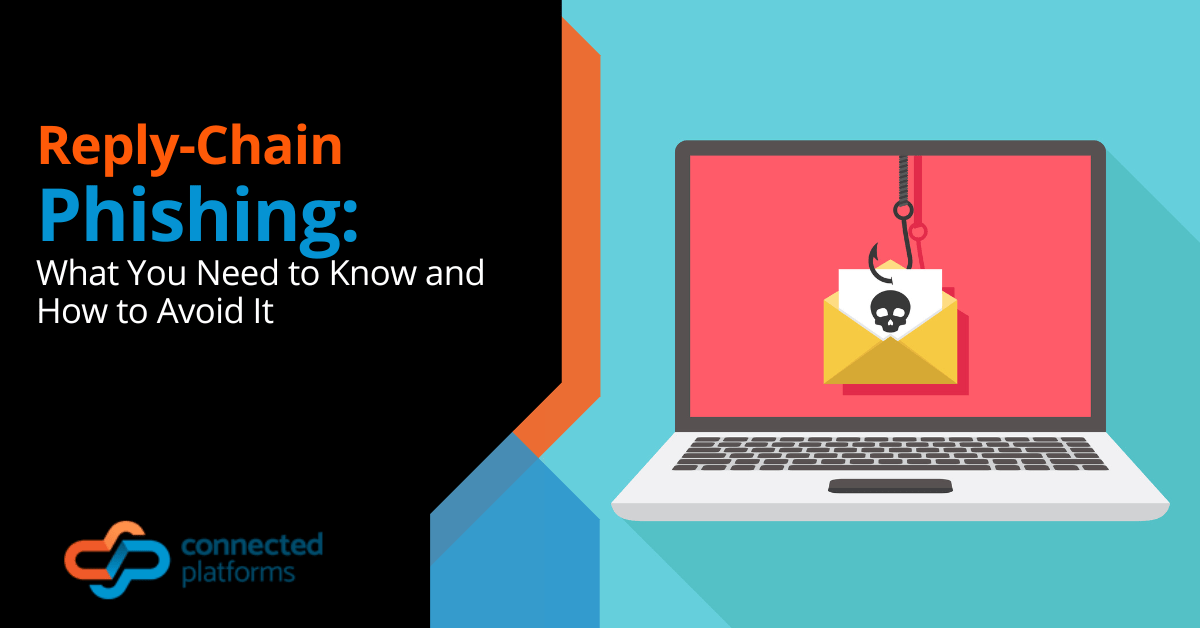Email phishing is one of the most common channels for enterprise malware infections, and Business Email Compromise (BEC) is the leading source of financial loss as a result of online crime in businesses. In fact, according to Australian law enforcement, in 2021, more than $75 million had been lost to BEC scams.
Unlike traditional phishing and spear phishing, which aim to mimic the sender using a phoney address, a more advanced attack type hijacks real email correspondence by introducing an email created for the sole purpose of phishing into an existing email discussion.
Other names by which this type of online attack is known are “hijacked email reply chain,” “thread hijack spamming,” and “reply chain attack.” In this article, we’ll look into how reply-chain phishing occurs and how you can defend yourself and your company from them.
What is reply-chain phishing?
Hackers employ reply-chain phishing to sneak themselves into genuine discussions using compromised accounts. Emails are sent from hijacked email accounts belonging to legitimate users in reply-chain phishing. The details of the email are usually gotten by various nefarious means. Once the hackers have gained access to the email account, they examine the email threads to pick those with the highest financial potential.
The unknown hacker then sends an email in response to one of the emails in the thread, disguised as a valid one, with a malicious URL. Inadvertently, recipients may click on the link and install or download malware, which can then propagate over the host network.
In addition, hackers are employing harmful URLs within off-duty chats. The hacker’s goal is to divert users’ attention and get them to download and install malware. However, some companies offer internet security services; Connected Platforms is one of the best Australian firms to help secure your network and emails.
How to defend your company from reply-chain phishing?
· Employee Training
Humans are the first line of protection against phishing. You can reduce the possibility of hackers getting into your network by teaching your personnel to recognise attacks and properly handle phishing emails. Although awareness training cannot ultimately reduce the risk of phishing attempts, it can have a major positive impact.
Ensuring your workers recognise and avoid phishing scams will save you a lot of money. Every staff in an organisation should know and understand how to recognise possible dangers.
Organise trainings and simulations to teach staff what a phishing attack may look like and develop simple reporting protocols so that everyone understands what to do when they encounter a suspicious email.
You should also assess your protocols consistently to ensure that they are effective and always current. This security awareness article should be of help in this aspect.
Every organisation needs processes for validating requests that may be part of an attack. Many phishing tactics request that employees make payments via an invoice or money transfer.
You can establish procedures for efficiently validating these sorts of requests using your company’s current structures.
Before sending it for approval, employees who double-check a request will escape the harshest repercussions of many phishing scams.
· Machine-Intelligent Protection
Technology may be the root of today’s cybercrime, but it can also help solve it. Machine learning, in particular, has demonstrated a notable ability to detect and neutralise phishing-related attacks.
Some automated tools can also examine an institution’s emails for odd or questionable activities. These systems can help avert disastrous cyber assaults when combined with professional humans.
Machine learning, which is a subclass of artificial intelligence, refers to computers’ capacity to detect patterns in large amounts of data. Certain people commonly engage with one another online at specific times of the day. Some people constantly connect from the same area, while others roam frequently. These trends can be identified and analysed by machine learning software.
Immediately, an automated system identifies trends throughout your organisation, it will highlight any obvious incongruities. If someone emails a co-worker they don’t usually contact, the system may flag the encounter as dangerous.
When someone unintentionally presses “respond to all,” the application may detect the error and hold that order. Any considerable divergence from the usual will almost certainly elicit a reaction from the machine. This level of continual surveillance is well beyond the capabilities of any human security staff, although it is ironic that the human team design the system.
When paired with human teams, machine intelligence provides the most impact.
Once communications have been detected, your cybersecurity team must determine what to do about them.
Human investigators will need to check into possible threats listed by the system to figure out what’s going on. Machine learning is significant because it detects more hazards than humans can and displays them in a form that makes them simpler to work on.
When technology and humans collaborate, your company may adopt a proactive strategy in the battle against cyber assaults. There’s no reason to relax and watch while malicious emails intermittently attack your staff. With the correct machine intelligence system set up, you can detect dangers before they get to your computers.
Improve Your Email Security Today
Email reply chain assaults are one of the numerous forms of social engineering used by threat actors to achieve their objectives. It might seem tricky, but it is possible to defeat attacks before they happen and cause long-term damage to the company if we maintain control over all parts of our cyber environment. Educate your users and train your staff, ensuring you are not on any hackers’ list.
Connected Platforms is one of the leading Managed IT service providers in Australia. Click the link to book a coffee meeting.




